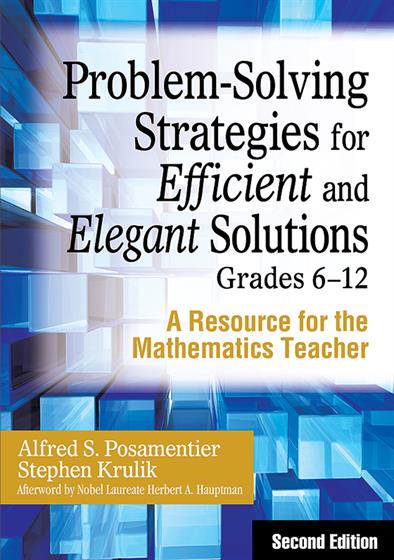Hands-on, Practical Guidance for Educators
From math,
literacy, science, equity, multilingual learners, and SEL, to assessment, school counseling,
and education leadership, our books are research-based and authored by experts
on topics most relevant to what educators are facing today.

Problem-Solving Strategies for Efficient and Elegant Solutions, Grades 6-12
Afterword by Nobel Laureate Herbert A. Hauptman
Help students become skilled and confident problem solvers!
This updated edition illustrates ten basic strategies for solving a wide range of mathematics problems and provides numerous examples to show how these techniques can be incorporated into a mathematics curriculum. Teachers and mathematics specialists can develop students' creative problem-solving skills through strategies such as working backwards, finding a pattern, adopting a different point of view, or making a visual representation. The new edition includes:
- References to current NCTM standards
- Examples of new problems for teaching the strategies
- Solutions to sample problems
- Extensive discussions of the strategies used to solve sample problems
- Grade Level: 6-12
- ISBN: 9781412959704
- Published By: Corwin
- Year: 2008
- Page Count: 280
- Publication date: March 20, 2008



